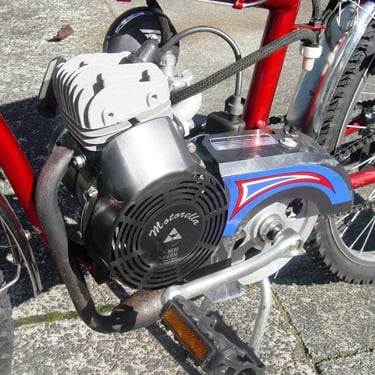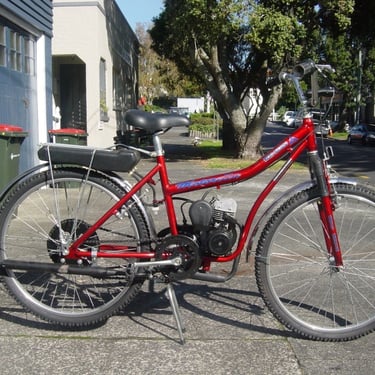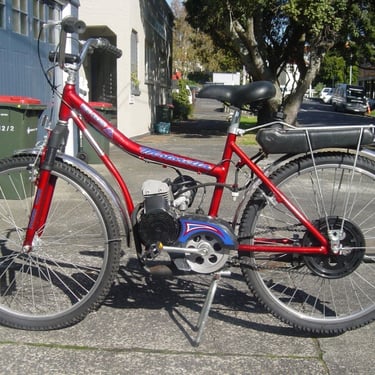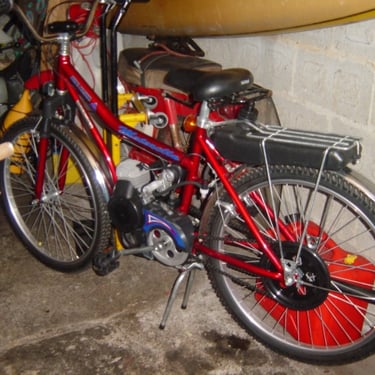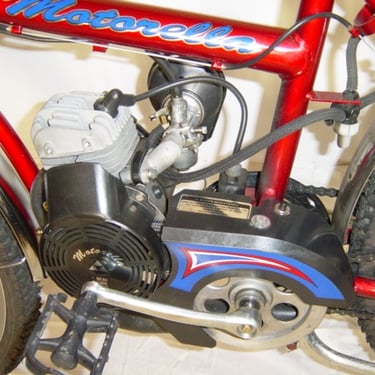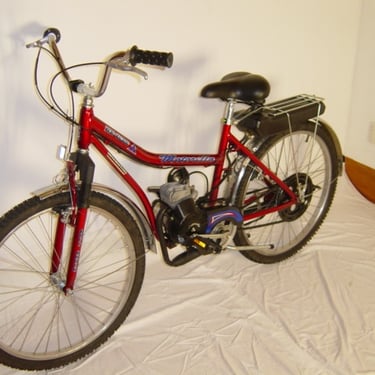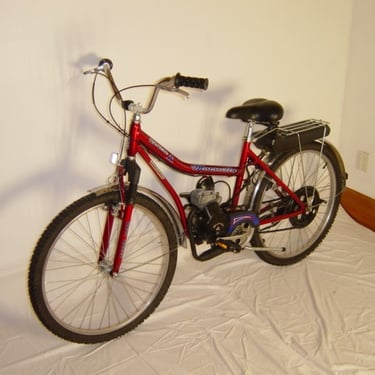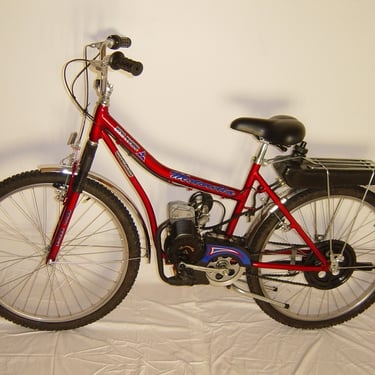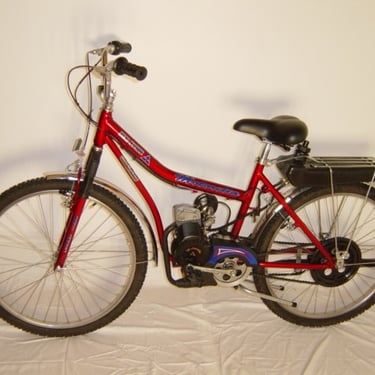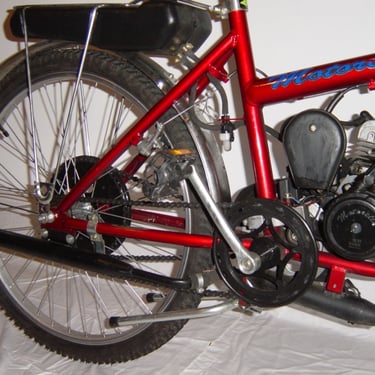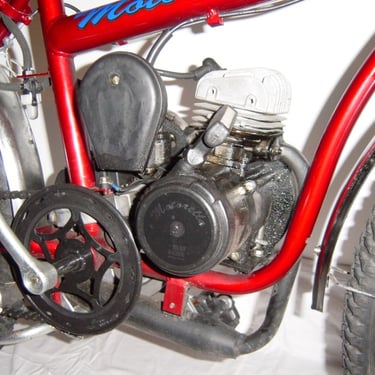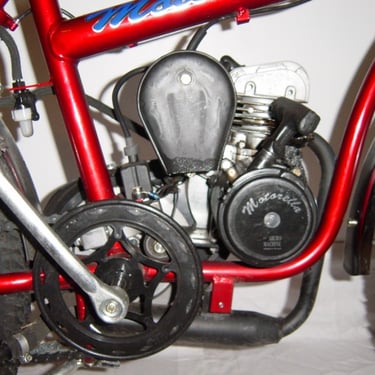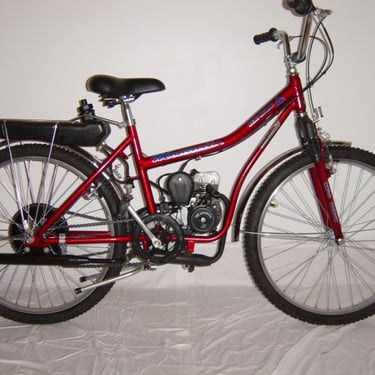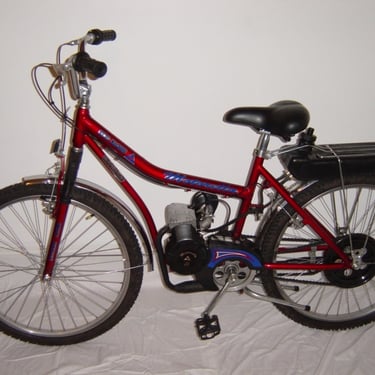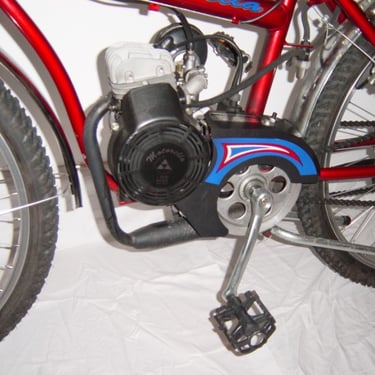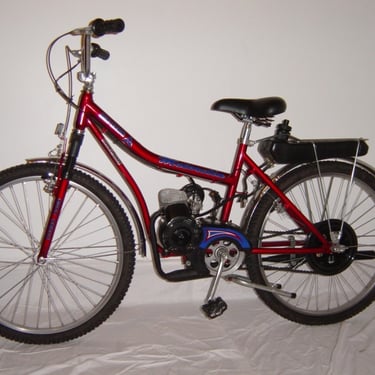From Mail to Memories: The History of Motorized Bicycle Manufacturing in Brazil
The Motorella 37cc motorized bicycle was a postal delivery vehicle used extensively across South America, in the 1990's, the bike was manufactured by Micro Machine in Brazil, along with its go-ped like Walk Machine stand up scooter.
1990'STWO STROKEMOTORIZED BICYCLES
1/6/20255 min read
From Mail to Memories: The History of Motorized Bicycle Manufacturing in Brazil
The manufacturing of motorized bicycles in Brazil has a rich and diverse history, reflecting the evolution of transportation and mobility in the country. Motorized bicycles, also known as mopeds, began gaining popularity in the 1970s and 1980s when the demand for more affordable and efficient transportation alternatives increased. Manufacturers such as Caloi, one of Brazil's leading bicycle companies, started exploring the production of motorized models, leveraging their expertise in traditional bicycle manufacturing.
The History of Motorized Bicycle Manufacturing in Brazil
The history of moped manufacturing in Brazil is marked by innovations and adaptations to local needs. Manufacturers developed models that combined the simplicity of bicycles with the convenience of a motor, allowing users to travel longer distances with less effort. These vehicles became a popular option for urban transportation, especially in areas with heavy traffic and limited space.
Additionally, the regulation and logistics surrounding motorized bicycles have also evolved. For example, Correios (the Brazilian postal service) has specific guidelines for transporting motorized bicycles, which is important for manufacturers and consumers wishing to ship or receive these products. Understanding transportation rules and legal requirements is crucial to ensuring that motorized bicycles are used safely and legally.
In summary, the manufacturing of motorized bicycles in Brazil reflects the country's adaptation to mobility needs, with a history involving innovation, regulation, and the pursuit of more efficient transportation solutions. The combination of tradition and modernity continues to shape the future of motorized bicycles in Brazil.
Who Are the Main Manufacturers of Motorized Bicycles in Brazil?
In Brazil, the market for motorized bicycles, including electric bikes and mopeds, has grown significantly in recent years. Several companies stand out in the manufacturing and sale of these vehicles, reflecting the increasing demand for sustainable mobility alternatives.
1. Lev Bicicletas Elétricas: Lev has been expanding in the Brazilian market with a diverse range of electric bicycles. Based in Rio de Janeiro, the company draws inspiration from successful business models in China and has increased its presence in Brazil, including opening a factory in Manaus. Lev is known for its innovative design and high performance, offering products that cater to various consumer needs.
2. Bicimoto: This company provides motor kits for bicycles, allowing users to convert their conventional bicycles into motorized models. Bicimoto stands out for its affordable options and payment plans, making motorized bicycles more accessible to many Brazilians.
3. Wind Bikes: As one of the largest manufacturers of electric bicycle kits globally, Wind Bikes operates in Brazil and offers a variety of products to cater to different cyclist profiles. The company has played a significant role in popularizing motorized bicycles and promoting sustainable urban mobility.
The history of motorized bicycle manufacturing in Brazil is closely tied to the growing awareness of sustainable mobility and the search for alternatives to traditional transportation. As the sector grows, more manufacturers are expected to enter the market, offering continuous innovations and improvements in available products.
How Are Motorized Bicycles Regulated by Correios in Brazil?
Motorized bicycles, also known as mopeds or e-bikes, have an interesting history in Brazil, particularly regarding their use by Correios. The regulation of these bicycles is essential to ensure safety and efficiency in deliveries.
Correios has adopted electric bicycles as part of its delivery fleet, aiming not only for agility but also for sustainability. In July 2023, the company announced the acquisition of 762 electric bicycles, which will replace part of its conventional bicycle fleet across Brazil. This initiative is part of a broader effort to modernize delivery logistics and reduce the company's carbon footprint.
The regulation of motorized bicycles in Brazil is defined by the Brazilian Traffic Code (Código de Trânsito Brasileiro), which classifies these vehicles and establishes specific rules for their circulation. For example, electric bicycles must meet certain criteria, such as maximum power and speed, to be considered legal on public roads. Additionally, in August 2023, the Rio de Janeiro City Council approved the prohibition of electric bicycles on bike paths, highlighting the need for clearer and more specific regulations.
Historically, motorized bicycles have been a practical solution for delivering mail and packages, especially in urban areas. Correios has been using this type of vehicle since the 1980s, and currently, around 4,000 cycling mail carriers operate throughout Brazil, using both conventional and electric bicycles for deliveries. This evolution in the delivery fleet demonstrates the company's adaptation to new market demands and environmental concerns.
In summary, the history of motorized bicycles in Brazil, especially in the context of Correios, is marked by a transition toward more sustainable and efficient solutions, with regulations aiming to balance innovation and traffic safety.
What Challenges Do Motorized Bicycle Manufacturers Face in Brazil?
Manufacturers of motorized bicycles, or electric bicycles, in Brazil face several challenges that impact their production and commercialization. One of the main obstacles is the need for innovation and adaptation to market demands. While the electric bicycle industry in Brazil has seen growth, it also experienced a significant downturn in 2023, mirroring global market difficulties.
Another major challenge is the lack of adequate infrastructure for urban mobility, such as bike lanes and charging points, which limits the adoption of these bicycles. According to research by the Brazilian Association of Bicycle Manufacturers, the migration of bicycle users to motorcycles is a concerning trend, potentially reflecting the lack of public policies that encourage the use of electric bicycles.
Operational and tax challenges are also significant. Recently, the company Vela, a manufacturer of electric bicycles, declared bankruptcy, citing operational difficulties and an unfavorable tax environment as determining factors. This highlights that, despite the market's potential, current conditions can be challenging for both new and established manufacturers.
On the other hand, there is a growing movement toward the electrification of bicycles, with initiatives seeking to popularize the use of electric bicycles and make them more accessible. Innovations, such as the introduction of hydrogen-powered electric bicycles, are also being explored, although they face challenges related to safety and refueling infrastructure.
For motorized bicycle manufacturers to thrive in Brazil, it is crucial to have a joint effort between the private sector and the government to overcome these challenges and create a more favorable environment for electric mobility.
What Are the Differences Between Motorized Bicycles and Mopeds?
Motorized bicycles and mopeds are mobility vehicles with distinct characteristics in terms of design and regulation. Motorized bicycles, also known as electric bicycles, are equipped with an electric motor that assists the cyclist but generally have power and speed limitations. In Brazil, to be classified as an electric bicycle, the vehicle must have a maximum power of 350 Watts and a maximum speed of 25 km/h, according to Contran regulations.
On the other hand, mopeds, which include electric scooters, are considered motorized vehicles and have different requirements. They can have more powerful engines and often require the driver to have a license and register the vehicle. Additionally, mopeds can reach speeds above 25 km/h, placing them in a different category in terms of regulation and use on public roads.
Considerations on Use and Regulation
It is important for users of motorized bicycles and mopeds to be aware of traffic rules and the technical specifications of their vehicles. Failure to comply with regulations can result in fines and legal issues. Moreover, choosing between a motorized bicycle and a moped should take into account factors such as the intended use, the distance to be traveled, and the available infrastructure in cities.
In summary, both motorized bicycles and mopeds have their place in the Brazilian market, each with its specific characteristics and regulations, reflecting the evolution of urban mobility in the country.
